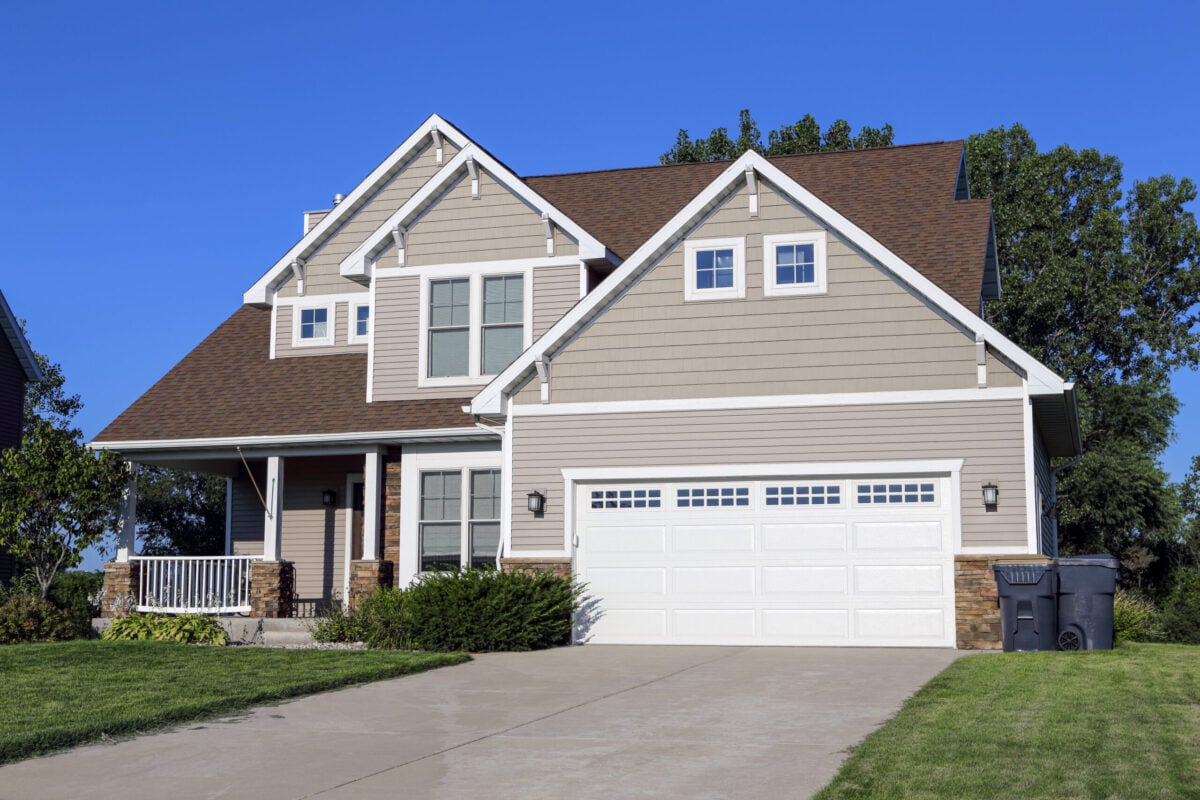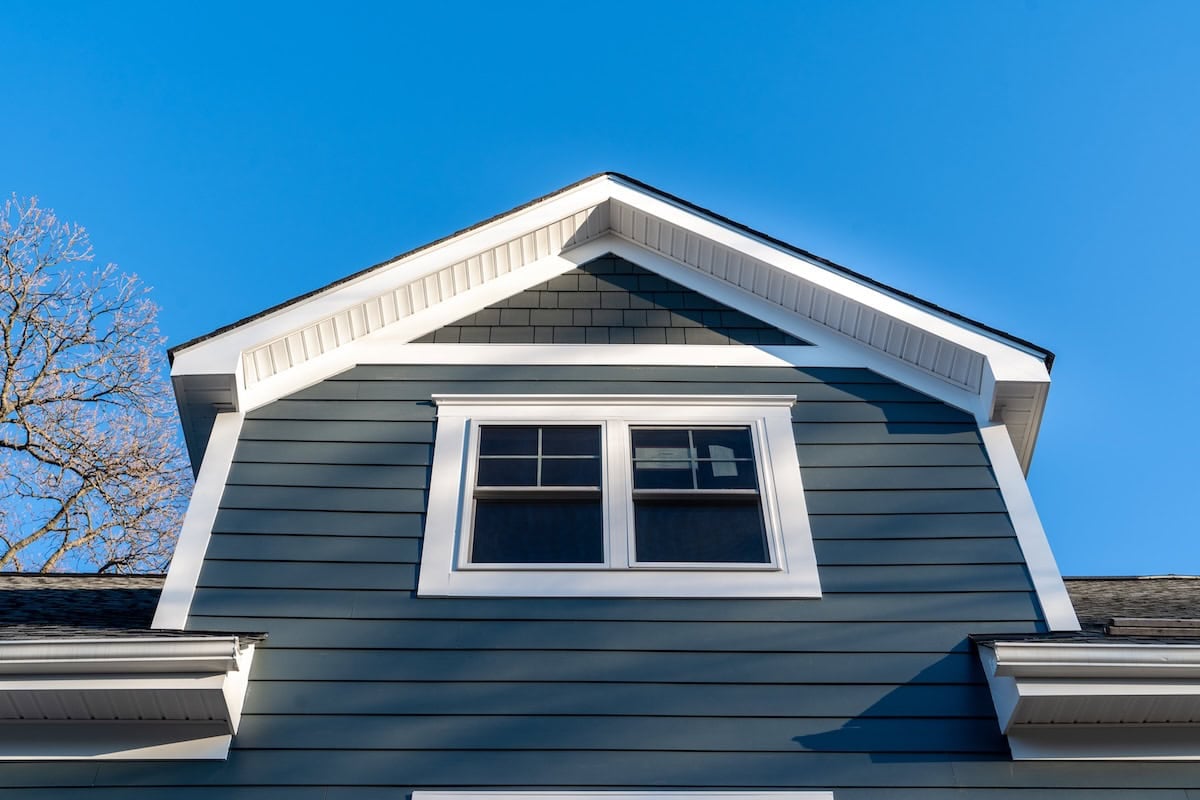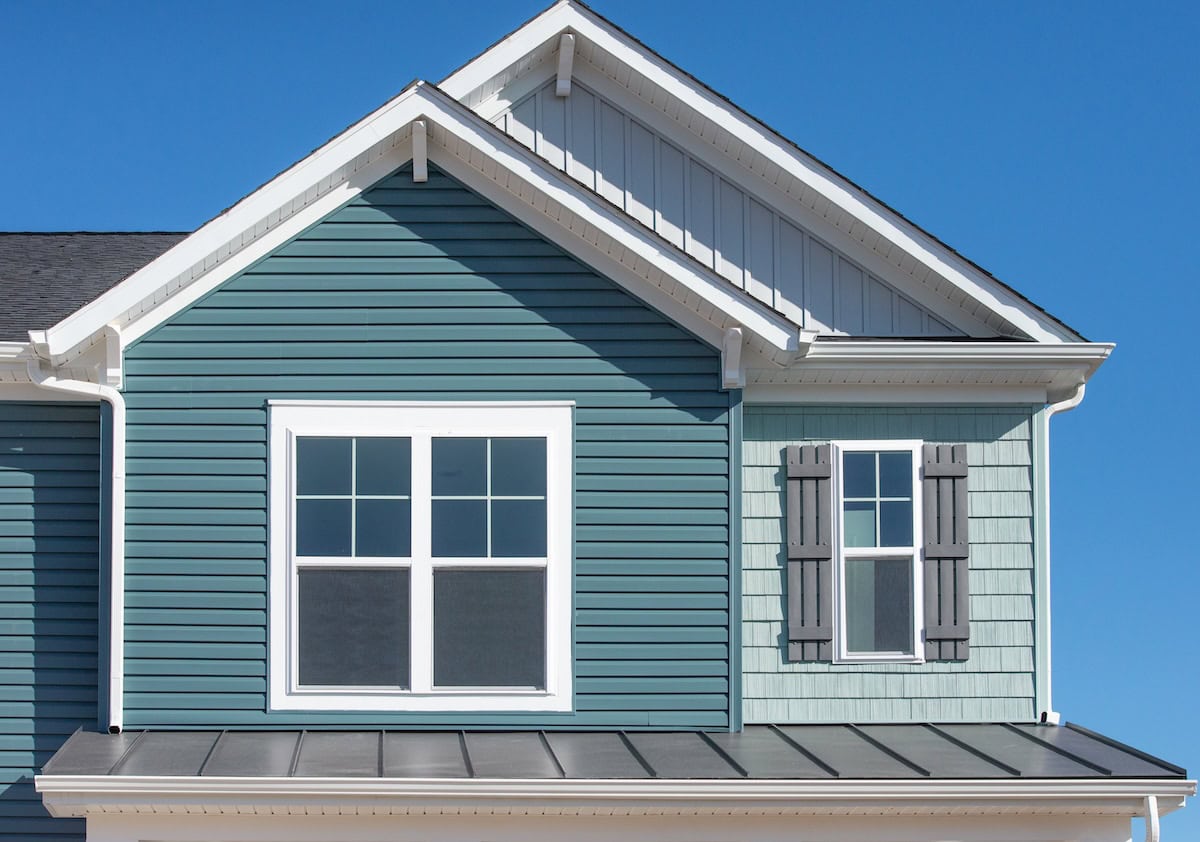Choosing the right vinyl siding color for your home is no small task. Your siding isn’t just about protecting your home; it also plays a huge role in its curb appeal. Whether you’re considering a bold transformation or are drawn to timeless, subtle hues, 2025 has some stunning color options to suit every style.
- Why your siding color matters
- Top 7 vinyl siding colors of 2025 (with a detailed breakdown)
- Tips for selecting the right vinyl siding color
Why Your Siding Color Matters

Your siding color does more than just reflect your home’s personality—it plays a crucial role in its overall value and appeal. Choosing the right color can have a significant impact on everything from resale value to first impressions. Here’s why it matters and how it can make a difference:
- Boost Resale Value: A well-chosen siding color can increase your home’s curb appeal, making it more attractive to potential buyers and helping it stand out in a competitive market.
- Create a Welcoming Exterior: The right color combination can make your home feel warm and inviting, leaving a lasting impression on visitors and passersby.
- Enhance Curb Appeal: A beautiful, coordinated exterior can transform your home, making it the highlight of the neighborhood.
-
Match Architectural Style: Selecting a color that complements the whole architecture, including your house’s exteriors and roof, ensures a cohesive and timeless look.
- Set the Right Mood: Colors can evoke different emotions and vibes—whether it’s modern and sleek, classic and cozy, or bold and dramatic, your siding color sets the tone.
Top 7 Vinyl Siding Colors of 2025

Curious about what’s trending? Below are the seven vinyl siding colors making waves in 2025. These shades blend timeless elegance with on-trend designs, giving your home a fresh and modern vibe.
1. Slate Blue
A harmonious mix of sophistication and calm, slate blue is an excellent choice for homeowners looking to create a serene yet modern aesthetic. This versatile color is especially popular in homes aiming for a contemporary or coastal look, as it evokes the soothing hues of the ocean and sky. Paired with white trim or accents, slate blue creates a clean, crisp finish that enhances the architectural details of your home. It also works well with natural stone features, light gray roofing, or even warm wood tones for a balanced, refined appearance. Whether you’re near the coast or in the suburbs, slate blue provides a fresh, elegant vibe to any exterior.
2. Classic White
Nothing beats the timeless appeal of classic white siding. It’s a color that symbolizes elegance, purity, and simplicity, making it a go-to choice for homeowners across all regions. Classic white siding stands out beautifully when paired with contrasting darker trims, such as black shutters or navy blue doors, creating a crisp, eye-catching look. It also complements rustic accents like natural wood beams or stonework, offering a blend of tradition and sophistication. Whether your home is in a bustling city suburb or a peaceful countryside setting, classic white remains an all-time favorite for its ability to adapt to any architectural style while maintaining a clean and polished exterior.
3. Charcoal Gray
If you’re looking for a dramatic yet versatile tone, charcoal gray is your go-to color. Its deep, bold vibe adds a modern, sophisticated touch to any home while remaining neutral enough to pair with a wide range of accents. Charcoal gray works incredibly well with natural wood finishes, creating a warm and inviting contrast. It also pairs beautifully with vibrant landscaping, such as colorful flower beds or lush greenery, which pop against the dark tone. For a sleek and contemporary look, combine charcoal gray siding with black accents or metallic finishes. For a cozier feel, lighter trims in white or soft beige can soften its boldness while maintaining its striking appeal.
4. Soft Beige
Warm and inviting, soft beige exudes a cozy charm that makes any house feel like a home. This neutral tone is ideal for both traditional and modern home designs, as it provides a versatile base that complements a variety of architectural styles. Soft beige blends seamlessly with earth-toned roofing, such as brown shingles or terracotta tiles, while also working beautifully with stone or brick features. It creates a welcoming atmosphere, especially when paired with darker accents like deep green shutters or black window frames. Soft beige is a color that radiates comfort and warmth, making it a perfect choice for families or anyone who wants their home to feel both elegant and approachable.
5. Forest Green
For homeowners wanting a striking, nature-inspired exterior, forest green is the perfect choice. This rich, earthy hue brings a bold touch to your home while blending effortlessly with its surroundings, particularly in wooded or natural areas. Forest green pairs wonderfully with natural wooden features, such as doors, beams, or fencing, to create a seamless, environmentally conscious aesthetic. For a more refined look, combine it with stone elements or lighter trims in cream or beige, which help balance its intensity. Forest green is a statement color that celebrates the beauty of the outdoors, making it ideal for those who want their home to reflect a sense of harmony with nature.
6. Sandstone
Sandstone captures an earthy, neutral vibe that is perfect for homes in warm or sunny climates. Its soft, sandy tones evoke a sense of calm and tranquility, making it an excellent choice for creating a timeless, relaxed appearance. When paired with cream accents, white shutters, or natural stone features, sandstone siding enhances the architectural details of your home while maintaining a cohesive, grounded look. It’s especially popular for Mediterranean or Southwest-inspired designs but is versatile enough to suit modern or traditional styles. Sandstone’s warm undertones exude comfort and stability, making it a reliable option for homeowners seeking a natural and enduring aesthetic.
7. Black Accents with Contrasts
While black may not be your main siding color, it’s rapidly gaining popularity in 2025 as a bold, stylish accent. Black shutters, trim, or panel highlights add undeniable sophistication and depth to any home exterior. When paired with lighter siding colors, such as classic white or soft gray, black creates a striking contrast that commands attention without overwhelming the design. Black accents can also be used to frame windows, doors, or rooflines, giving your home a sleek, modern edge. For those who want to make a statement, combining black accents with metallic finishes or natural wood details can elevate your home’s exterior to a whole new level of contemporary elegance.
Tips for Selecting the Right Vinyl Siding Color

1. Consider Your Climate
The climate you live in plays a big role in how colors appear and function on your home’s exterior. In warmer climates, lighter colors like white, beige, or soft pastels work well because they reflect sunlight, helping to keep your home cooler. In contrast, darker shades like deep browns, greens, or navy blues absorb heat, making them a better option for cooler regions where keeping your home warm is a priority. Beyond temperature, also consider the intensity of sunlight in your area, as harsh sunlight can cause some colors to fade faster over time.
2. Match Your Home’s Style
Your home’s architectural style should guide your color choices. Traditional styles, such as colonial or Victorian homes, often look best with classic and neutral tones like creams, whites, or soft grays, which highlight their timeless appeal. On the other hand, contemporary or modern homes can make a statement with bolder, more dramatic colors like charcoal gray, slate blue, or even dark green. Research your home’s era and design influences to find a palette that enhances its character and visual appeal.
3. Harmonize with Your Roof
The roof is one of the most dominant features of your home, and its color should harmonize with your siding to create a cohesive look. For instance, there are many different roof and siding color combinations, so, for example, if your roof has dark brown or black shingles, neutral tones like beige, sandstone, or cream can complement it beautifully. For roofs with red tiles, earthy tones like warm grays, taupes, or terracotta siding can tie the look together. Take a step back and look at your home as a whole—your siding should blend seamlessly with the roof rather than compete for attention.
4. Test the Shades
Paint colors can look very different once they’re applied to a large exterior surface and exposed to natural light. The lighting changes throughout the day—from bright morning sunshine to the soft glow of evening—and this can significantly impact how a color appears. Before committing, try painting sample swatches of your chosen colors directly onto your siding. Observe how they look at different times of the day and in varying weather conditions. This small step can save you from costly mistakes and ensure you pick a color that you’ll love in all lighting conditions.
Trust K&D Roofing for Your Siding Needs
At K&D Roofing, we understand that choosing the right vinyl siding color is about more than just curb appeal—it’s about creating a home you love coming back to every day. With our expert siding guidance, quality installations, and dedicated team of licensed professionals, you can trust us to bring your vision to life with ease and precision.
Ready to transform your home? Contact K&D Roofing today for a free consultation and let us help you create a beautiful, durable exterior that stands out for all the right reasons!

